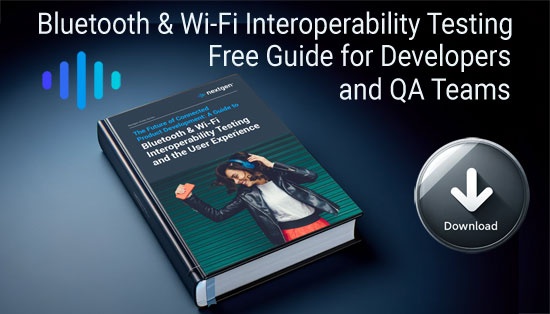What is Infotainment Testing? Assessing the Automotive Customer Experience

Assessing the Automotive Customer Experience
What is Infotainment Testing?
Infotainment testing focusses on the automotive user experience by ensuring the multiple features and functions of the infotainment system work together in harmony. Infotainment testing takes an end-to-end approach. It evaluates system and screen responsiveness as well as functional performance. The process includes testing HMI, USB, Bluetooth, and Wi-Fi interoperability. It also covers routing audio channels and assessing transitions between the native infotainment HMI and Apple CarPlay or Android Auto ecosystems. Additionally, it tests their VR voice assistants and ensures seamless integration with the native voice assistant functions. Infotainment testing also assesses the function of automotive apps used in the car, both natively on the head unit and in mobile phone projection modes, covering apps such as navigation, communication and media streaming services.
Modern infotainment systems have evolved from being high end options in luxury vehicles to being a standard feature on all new vehicles as integral components of the connected digital cockpit, underpinning a vehicle's consumer appeal. As infotainment platforms grow more sophisticated with each new iteration, ensuring the reliability, functionality, and overall user-friendliness of the infotainment system becomes more complex. With the modern connected car the complexity of the challenges are multifaceted.
Watch our video above to see Nextgen's real-world automated infotainment testing in action, from infotainment automation and touchscreen functionality testing with cobot to intricate voice recognition tests and the transition between native voice assistants and VR functions such as Apple's Siri and Google Assistant. The video also illustrates multiregional testing and shows how comprehensive testing assures a seamless user experience across languages and regions to provide comprehensive end-to-end user experience testing for automotive infotainment.
The Infotainment Customer Experience
- Feature-Rich Experiences: From hands-free calls and VR virtual assistants, and from sat-nav point of interest destinations to creating the perfect ambience with our favourite tunes, modern cars are brimming with digital experiences. The harmony between these features is vital to a well-rounded driving experience.
- Primary Concerns: Surveys from consumer research such as JD Power's automotive IQS and VDS studies continue to spotlight in-car technology as a chief consumer concern. Issues encompassing voice recognition (VR), Bluetooth, and functioning of screen projection modes risk tarnishing automotive OEM reputations, emphasising the significance of getting these systems right.
The Nuances and Complications of Modern In-Car Tech
- Diverse Voice Recognition Systems: The coexistence of systems like Siri, Google Assistant, and native VR can inadvertently introduce inconsistencies and unexpected behaviours, leading to user confusion and frustration.
- Layered Infotainment System UI: The integration of multiple functions including native UI and different screen projection modes like Apple CarPlay or Android Auto add complexity, posing challenges to users unfamiliar with their nuanced operations, for example where streaming audio apps are available both via native UI and screen projection modes.
Navigating Connectivity Challenges
- Network Transitions: Switching between networks, such as transitioning from home Wi-Fi to 4G/5G on the move, has its set of challenges and potential to disrupt the user experience.
- Screen Projection Issues: Both wireless and wired screen projections come with their hurdles. While wireless brings interoperability concerns at both device and connection levels, wired projection modes can be affected by the interplay between USB connections and Bluetooth profiles.
- Bluetooth Connectivity: Bluetooth’s ubiquity, while convenient, can occasionally cause audio routing issues, especially when multiple Bluetooth audio devices are simultaneously connected and active.
Mobile Device Overload and User Implications
- Overheating Effects: Mobile phones are prone to heating up while under load, and with multiple apps running in the car, and the warmer in car environment, unpredictable phone behaviour caused by thermal management regimes, such as throttling CPU cycles and wireless connection drops can be experienced. The increasing popularity of in-car wireless charging can amplify these thermal effects.
- Interoperability and User Experience: The integration of multiple technologies can create unexpected compatibility and interoperability issues. With various devices connected simultaneously, profile challenges emerge, often leaving users who ‘just expect everything to work’ confused by the complex connectivity methods at play.
Nextgen's End-to-end Solution
- ATAM Connect Automation: Designed to reproduce and test real world in-car use cases, ATAM Connect is an end-to-end infotainment test platform designed to ensure an excellent user experience.
- Emphasis on Automation: The ability to reproduce and root cause complex issues efficiently using automation to a assess the customer experience is pivotal. Nextgen test automation ensures a holistic view of infotainment functions and sets the highest standards in testing, problem identification and issue resolution.
End-User help and guidance
- Accessible Resources: Nextgen's comprehensive suite of online resources powers websites, FAQs, and troubleshooting guides to inform users about potential interoperability and performance issues, empowering the consumer to maximise the in-car infotainment experience.
A Balanced View on Testing and User Support
- Challenges are Inevitable: With the rapid evolution of connected cars and the broadening scope of the infotainment system issues during development are to be expected. However, it's how these are tested and issues addressed during development that distinguishes the industry leading user experiences.
- Nextgen's Proactive Approach: Beyond top-tier testing solutions, Nextgen's dedication extends to continuous user education and guidance, ensuring users remain at the forefront of their services.
Automated End-to-end Infotainment Testing
By embracing automation, leveraging advanced tools, and maintaining a focus on user experience Nextgen is positioned to shape the future of infotainment testing and the mission to assist automotive makers to ensure the customer experience, ensuring drivers enjoy a harmonious blend of technology and comfort.
To find out more about Nextgen's automotive infotainment services, please contact Nextgen today on +44 3331 120000.



